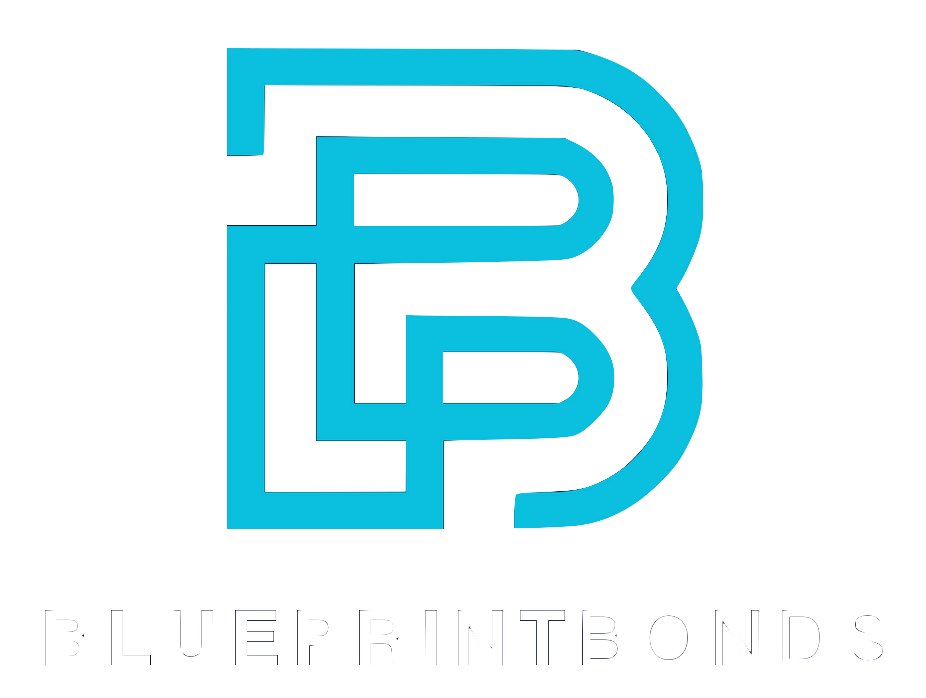Over the past decade, small businesses have experienced significant shifts in bonding rates and access to surety bonds, which are crucial for securing contracts and growing operations. Bonding rates not only reflect the financial health and creditworthiness of small enterprises but also influence their ability to compete for larger projects, especially in government contracting and service industries. This article explores the trends in small business bonding rates over the last ten years, highlighting key developments, challenges, and opportunities that have shaped the landscape.
One of the most notable recent milestones is the U.S. Small Business Administration’s (SBA) Surety Bond Guarantee Program, which in fiscal year 2024 bonded an impressive $2.8 billion in contracts to small businesses, marking its best performance in 25 years. This achievement underscores the growing importance of bonding programs in supporting small business growth and competitiveness in a complex economic environment. For more details on this milestone, see the SBA Surety Bond Guarantee Program report.
Understanding Bonding and Its Role in Small Business Growth
Surety bonds act as a financial guarantee that a contractor will fulfill their obligations under a contract. For small businesses, obtaining bonding can be a gateway to larger and more lucrative projects, especially in industries like construction, healthcare, and education. Bonding rates—essentially the cost of securing these bonds—are influenced by factors such as creditworthiness, financial stability, and industry risk.
Over the last decade, the bonding market has evolved alongside economic cycles, regulatory changes, and shifts in lending practices. Small businesses have faced both tightening and loosening of bonding requirements depending on broader market conditions. For many, bonding remains a critical hurdle; however, programs like the SBA’s have helped lower barriers by providing guarantees that reduce the risk for surety companies.
The Impact of SBA’s Surety Bond Guarantee Program
The SBA’s Surety Bond Guarantee Program has been a cornerstone for small businesses seeking bonding support. In fiscal year 2023, the program bonded $7.3 billion in contracts to small businesses, demonstrating strong demand and effectiveness. By 2024, this figure was $2.8 billion for the year, signaling a robust market despite economic uncertainties.
Importantly, the SBA increased the maximum bonding capacity for small businesses from $6.5 million to $9 million for all projects, and raised the bonding limit on federal contracts from $10 million to $14 million. These changes have expanded opportunities for small businesses to compete for larger contracts that were previously out of reach. The General Indemnity Group’s analysis provides further insights into these market shifts.
Moreover, the program not only facilitates access to bonding but also enhances the credibility of small businesses in the eyes of potential clients. When a contractor is bonded, it signals to clients that they are financially stable and capable of completing projects on time and within budget. This assurance can be particularly important in competitive bidding situations, where trust and reliability are paramount. Additionally, the program has been instrumental in fostering diversity within the contracting space, enabling minority-owned and women-owned businesses to gain a foothold in industries that have traditionally been dominated by larger firms.
As the landscape of small business contracting continues to evolve, the role of surety bonds will likely become even more significant. With increasing emphasis on sustainability and innovation, many small businesses are finding new niches that require specialized skills and compliance with stringent regulations. The bonding process, while sometimes daunting, can serve as a stepping stone for these businesses to not only secure contracts but also to build lasting relationships with larger entities and government agencies. This interconnectedness can lead to a more resilient economy where small businesses thrive alongside their larger counterparts.
Trends in Small Business Lending and Their Influence on Bonding Rates
Bonding rates are closely linked to the financial health of small businesses, which in turn is influenced by lending conditions. Over the last decade, small business lending has seen fluctuations in approval rates, interest costs, and default risks, all of which affect bonding capacity and costs.
In 2025, approximately 45% of businesses applying for loans were denied, highlighting ongoing challenges in accessing capital. Meanwhile, 71% of small businesses carried outstanding debt, averaging around $195,000. The average interest rates for small business loans ranged between 6.54% and 11.7%, reflecting the impact of Federal Reserve policies on borrowing costs.
Loan Default Rates and Financial Stability
Despite challenges, the default rate for small business loans is projected to decline to 3.19% in 2025, indicating improving financial stability among many small enterprises. This trend can positively influence bonding rates, as surety providers often assess loan repayment history and overall financial health when determining bond pricing and availability.
However, 20% of small businesses reported difficulties in making loan payments in 2025, up from 17% the previous year, signaling that financial stress remains a concern for a significant portion of the market. This mixed picture suggests that while some small businesses are strengthening their financial footing, others continue to face hurdles that could affect their bonding prospects. The variability in financial health among small businesses can be attributed to several factors, including industry-specific challenges, regional economic conditions, and the overall business climate. For instance, sectors such as hospitality and retail have been particularly vulnerable to fluctuations in consumer spending, which can directly impact revenue and, consequently, the ability to service debt.
Additionally, the rise of alternative lending platforms has begun to reshape the landscape of small business financing. These platforms often provide faster access to capital with less stringent requirements than traditional banks, which can be a double-edged sword. While they offer opportunities for businesses that may have been previously underserved, they also come with higher interest rates and fees, potentially exacerbating the debt burden. As small businesses navigate these new lending avenues, their choices will inevitably influence their financial stability and bonding rates, making it essential for them to carefully weigh the benefits and risks associated with each option.
Industry-Specific Bonding Dynamics
Bonding rates and access vary significantly by industry, with service-based sectors such as healthcare and education showing steady demand and lower risk profiles. In 2025, 32% of small business loans were issued to these service-based industries, reflecting their relative stability and consistent cash flow compared to more cyclical sectors like construction or manufacturing. This trend is particularly noteworthy as it underscores the resilience of service-based businesses, which often have established client bases and predictable revenue streams, making them more attractive to lenders and surety providers alike.
This industry-specific trend is mirrored in bonding markets, where businesses in lower-risk industries may benefit from more favorable bonding terms and rates. Conversely, sectors with higher operational risks or volatility may face higher bonding costs or stricter qualification criteria. For instance, construction firms may encounter challenges in securing bonds due to the inherent uncertainties associated with project timelines and costs, which can fluctuate dramatically based on market conditions and regulatory changes. As a result, these businesses often need to demonstrate robust financial health and a solid track record to gain access to favorable bonding options.
Government Contracting and Bonding Opportunities
Government contracts often require bonding as a prerequisite, making bonding rates a critical factor for small businesses aiming to enter or expand in this space. The SBA’s increased bonding limits for federal contracts—from $10 million to $14 million—have opened doors for small businesses to pursue larger government projects, which can be transformative for growth. This increase not only allows small businesses to compete for more substantial contracts but also encourages them to invest in their capabilities, leading to enhanced service offerings and operational efficiencies.
This expansion aligns with broader government initiatives to support small business participation in federal procurement, recognizing the role of bonding in ensuring project completion and financial accountability. The government’s commitment to fostering a diverse supplier base is evident in programs designed to assist minority-owned, women-owned, and veteran-owned businesses in navigating the bonding process. For more on these developments, the General Indemnity Group’s report offers detailed analysis. Additionally, understanding the nuances of bonding requirements can empower small businesses to strategically position themselves for success, enabling them to leverage government contracts as a pathway to sustainable growth and increased market presence.
Challenges and Future Outlook for Small Business Bonding
While there have been positive developments in bonding rates and access, small businesses still face challenges. The decline in the Experian Small Business Index to 32.8 in July 2025 suggests a less favorable business environment, which can translate into tighter bonding conditions as surety providers become more risk-averse. This situation may lead to increased scrutiny of small business applications, requiring owners to present more comprehensive financial documentation and a clearer business plan to secure the necessary bonds.
Additionally, the high denial rate for loan applications and increasing difficulties in loan repayments indicate financial pressures that could constrain bonding capacity. Small businesses must therefore focus on maintaining strong credit profiles, managing debt prudently, and leveraging programs like the SBA’s to enhance bonding opportunities. Furthermore, understanding the nuances of cash flow management and the importance of timely payments can significantly improve a business's standing with surety companies, which often look for indicators of reliability and financial health.
Strategies for Improving Bonding Prospects
To navigate the evolving bonding landscape, small businesses should prioritize financial transparency, build relationships with surety providers, and explore government-backed bonding programs. Staying informed about market trends and regulatory changes is also essential for anticipating shifts in bonding rates and requirements. Engaging with industry associations and networking with other business owners can provide valuable insights and strategies that have proven effective in similar situations.
As the SBA continues to support small businesses with expanded bonding limits and guarantees, there is reason for optimism. However, businesses must remain vigilant and proactive to capitalize on these opportunities amid ongoing economic uncertainties. Additionally, small business owners should consider investing in professional development and training for their teams, as a well-informed workforce can contribute to improved operational efficiency and better financial decision-making, which in turn can enhance the overall bonding prospects for the business. By fostering a culture of continuous improvement and adaptability, small businesses can better position themselves to meet the challenges of the future head-on.
Conclusion
Over the last ten years, small business bonding rates have reflected broader economic trends, lending conditions, and government initiatives. The SBA’s Surety Bond Guarantee Program has played a pivotal role in enhancing bonding access, particularly with recent increases in bonding limits and record-breaking contract bonding volumes.
Despite challenges such as loan denials and payment difficulties, the outlook for small business bonding remains cautiously optimistic. By understanding industry-specific dynamics, leveraging government programs, and maintaining financial health, small businesses can improve their bonding prospects and position themselves for growth in competitive markets.
For ongoing updates on small business lending and bonding trends, resources like
NerdWallet’s small business statistics provide valuable insights into the evolving financial landscape.




